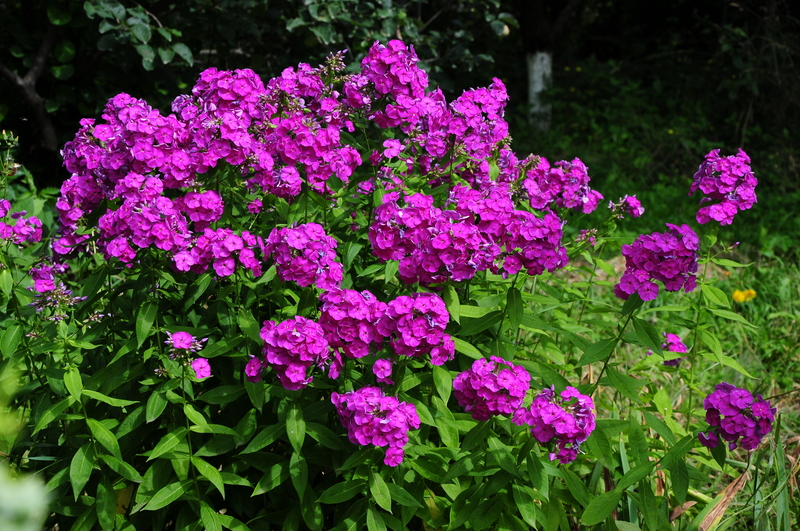Innovative urban flora with vertical gardening
Posted on 29/06/2025
Embracing Innovative Urban Flora with Vertical Gardening
Urban spaces around the globe are undergoing a remarkable transformation, thanks to the rise of vertical gardening--an ingenious response to the challenges of modern city life. As populations soar and green spaces dwindle, the drive for sustainable, beautiful, and functional city environments has never been stronger. The use of innovative urban flora with vertical garden installations is not only sprucing up concrete jungles, but also addressing key issues such as air quality, mental well-being, and biodiversity.

Understanding Vertical Gardening: The Basics
Vertical gardening, sometimes referred to as vertical urban greening, involves growing plants on vertical surfaces either on the exterior or interior of buildings. Instead of stretching outward across costly land, these gardens climb up walls, fences, or frameworks, transforming previously unused vertical real estate into lush, living tapestries. The main goal is to maximize plant growth in city environments where space is limited, while leveraging the multiple benefits these green installations provide.
The Concept Behind Vertical Urban Flora
- Space Efficiency: Vertical gardens make optimal use of scarce urban land, enabling green growth where traditional gardening is impossible.
- Diversification: A wide variety of plant species--herbs, succulents, ferns, and flowering plants--can thrive in these installations.
- Modularity: Many systems are modular, allowing easy customization and scalability for different buildings or environments.
Types of Innovative Vertical Gardens
1. Living Walls
Living walls, or green walls, are composed of panels of urban flora grown vertically using soil, hydroponic, or aeroponic systems. They are often integrated into the facades of buildings for insulation, beauty, and air filtering, making them an important component of innovative city landscapes.
2. Green Facades
Green facades involve climbing plants, such as ivy or flowering vines, that grow directly on the surfaces of buildings or across trellises and support structures. Their ability to insulate and cool buildings while capturing airborne dust highlights their environmental significance in urban settings.
3. Modular Vertical Planters
- These systems consist of individual containers or pockets attached to walls, fences, or freestanding frames.
- They offer exceptional flexibility, making them ideal for both residential settings and public spaces.
4. Indoor Vertical Gardens
Modern cities are not just greening their exteriors. Indoor vertical gardens are being installed in offices, schools, shopping malls, and homes to purify indoor air and create calming green sanctuaries.
The Ecological and Social Benefits of Urban Vertical Flora
The integration of innovative vertical urban gardening delivers a host of ecological and social advantages, all of which align with the movement toward more sustainable, healthier cities.
Environmental Advantages
- Improved Air Quality: Vertical gardens absorb carbon dioxide and capture airborne pollutants, fostering cleaner urban air.
- Biodiversity Enhancement: They provide habitats and food sources for birds, insects, and other urban wildlife.
- Temperature Regulation: Green walls can cool buildings in summer and insulate them in winter, reducing reliance on heating and cooling systems.
- Noise Reduction: Plant layers can muffle street noise, creating quieter environments inside buildings.
Social and Psychological Benefits
- Increased Productivity: Studies reveal that exposure to greenery in living and working spaces boosts focus and productivity.
- Mental Well-Being: Access to lush, green environments is linked to reduced stress and improved emotional health.
- Community Engagement: Community-driven vertical garden projects foster interaction, learning, and pride among urban residents.
Innovative Plant Selection for Vertical Gardens
Effective vertical garden design hinges on choosing the right flora. Not all plants are equally suited to vertical installations, but remarkable advancements in plant science and horticulture have enabled a wide range of flora to thrive on walls.
Optimizing Flora for Vertical Landscapes
- Drought-Resistant Plants: Succulents and drought-resilient species can handle sporadic watering and less soil.
- Shade-Loving Species: Ferns, mosses, and certain flowering plants thrive in shaded vertical installations.
- Edible Urban Gardens: Innovative setups are now being used to grow herbs, lettuce, strawberries, and even tomatoes in vertical urban farms.
- Colorful and Textural Variety: Layering different textures and colors adds dynamic visual interest to the cityscape.
Many urban projects are enlisting the expertise of botanists to develop new plant hybrids that are more resilient, require less maintenance, and offer heightened environmental benefits.
How Vertical Gardens Are Revolutionizing Urban Landscapes
From Aesthetics to Eco-Functionality
Vertical gardens are not merely decorative. They serve as multi-functional ecological assets, subtly improving urban environments in the following ways:
- Integrating Sustainability: Buildings equipped with green walls score higher in sustainability metrics like LEED certification.
- Enhancing Urban Biodiversity: These gardens offer critical green corridors for pollinators and migratory birds within city centers.
- Reducing Urban Heat Islands: Plants absorb and reflect sunlight, stabilizing building temperatures and city climates.
Successful Projects Around the World
Innovative urban flora initiatives with vertical gardening are taking root across continents. Examples include:
- The Bosco Verticale in Milan: This pair of residential towers features over 900 trees and 20,000 plants, redefining urban living.
- The CaixaForum in Madrid: Boasting a dramatic green wall by botanist Patrick Blanc, it showcases over 250 species flourishing vertically.
- One Central Park in Sydney: This residential building is adorned with native and exotic flora that provides natural shading and stunning aesthetics.
Smart Technology Meets Urban Gardening
The latest advancements in urban horticulture leverage smart technology to enhance vertical gardening systems. This intersection of horticulture and IoT (Internet of Things) results in:
- Automated Irrigation: Sensors monitor soil moisture and environmental conditions, ensuring optimal watering with minimal waste.
- Remote Monitoring: Facility managers can track plant health and adjust care regimens remotely, increasing garden longevity.
- Solar Integration: Some vertical gardens include solar panels, combining green energy generation with plant growth.

Implementing Your Own Vertical Garden in the Urban Environment
Key Steps for Success
Are you inspired to bring innovative flora into your city life? Here's a step-by-step guide to launching a vertical garden:
- Location Analysis: Assess sunlight exposure, space availability, and local climate.
- System Selection: Choose between modular panels, trellises, or hydroponic installations based on your environment.
- Plant Choice: Select flora that thrives with your selected light, water, and temperature levels.
- Irrigation Planning: Install automated or manual watering systems appropriate for the size and scope of your garden.
- Ongoing Maintenance: Monitor plant health, prune regularly, and fertilize as needed for lasting results.
Why Every City Should Encourage Vertical Gardening
Urban planners and architects are increasingly recognizing the many benefits of innovative vertical gardens. By updating building codes to encourage green walls, offering subsidies or incentives, and providing educational resources, cities can accelerate the adoption of urban flora innovations and foster a healthier, more vibrant living environment for residents.
The Future of Urban Flora: Towards Greener, Healthier Cities
With mounting environmental pressures and an ever-growing need for urban resilience, the future of innovative urban flora with vertical gardening holds tremendous promise. Trends to watch include:
- Integration with Renewable Energy: Green walls and rooftops paired with solar, wind, and rainwater harvesting systems.
- Edible Vertical Farms: Vertical hydroponic farms bringing local food production directly to city dwellers.
- Biophilic Design: Incorporating natural elements more deeply into city planning and architecture, where living walls are central features.
Conclusion: Reimagining Urban Greenery
Vertical gardening and innovative urban flora are not only revitalizing city landscapes but also fundamentally changing our relationship with nature in metropolitan environments. As more cities invest in these solutions, the integration of multifaceted living walls, creative green facades, and smart indoor gardens will reshape how we live, work, and coexist with the natural world. Whether you're a homeowner, urban planner, or business owner, there's a compelling reason to participate in this movement--for the planet, for your health, and for the generations yet to come.
Embrace the future of urban flora. Consider how you can bring the beauty and benefits of vertical gardening to your own corner of the city, and become part of the vibrant, sustainable transformation sweeping across urban environments worldwide.



